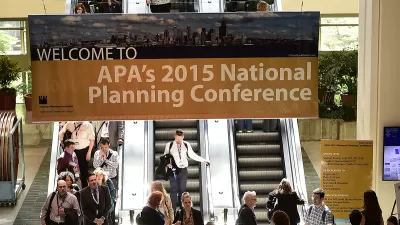With 800,000 employees on indefinite furlough, national parks closed, and federal benefits and programs eroding, it's safe to say the government shutdown will effect millions of Americans. But some urban areas will feel the pinch more than others.

The immediate effects of the first federal government shutdown in 17 years are being felt today by those forced to stay home from work and away from national parks and monuments. But, says Jed Kolko, "If it goes on for a long time, the shutdown could hurt the economy and therefore housing demand, particularly in the metros where people depend more on federal paychecks for their livelihood."
With that in mind, Kolko and his colleagues at the real estate website Trulia "looked at the share of total local wages going to federal employees," to understand which areas could be effected the most.
"No surprise that Washington D.C. and its suburbs depend most on federal paychecks: 18.5% of Washington D.C.-area wages go to federal employees, and 12.6% in neighboring Bethesda-Rockville-Frederick, MD," he notes. "But other metros – even some that are thousands of miles outside the Beltway – are also very dependent on the federal government: more than 10% of total wages go to federal employees in Virginia Beach-Norfolk, Honolulu, and Dayton, OH."
How will design professionals be effected by the shutdown? "A halt of federal funds intended for infrastructure projects could hamstring many landscape architecture firms," said the ASLA in a statement released today decrying the shutdown and its potential impact on their members. The AIA has published a web page to provide its members with up-to-date information about the shutdown, answers to frequently asked questions, and links to relevant resources.
FULL STORY: Metros That Could Suffer Most from a Federal Government Shutdown

Maui's Vacation Rental Debate Turns Ugly
Verbal attacks, misinformation campaigns and fistfights plague a high-stakes debate to convert thousands of vacation rentals into long-term housing.

Planetizen Federal Action Tracker
A weekly monitor of how Trump’s orders and actions are impacting planners and planning in America.

San Francisco Suspends Traffic Calming Amidst Record Deaths
Citing “a challenging fiscal landscape,” the city will cease the program on the heels of 42 traffic deaths, including 24 pedestrians.

Defunct Pittsburgh Power Plant to Become Residential Tower
A decommissioned steam heat plant will be redeveloped into almost 100 affordable housing units.

Trump Prompts Restructuring of Transportation Research Board in “Unprecedented Overreach”
The TRB has eliminated more than half of its committees including those focused on climate, equity, and cities.

Amtrak Rolls Out New Orleans to Alabama “Mardi Gras” Train
The new service will operate morning and evening departures between Mobile and New Orleans.
Urban Design for Planners 1: Software Tools
This six-course series explores essential urban design concepts using open source software and equips planners with the tools they need to participate fully in the urban design process.
Planning for Universal Design
Learn the tools for implementing Universal Design in planning regulations.
Heyer Gruel & Associates PA
JM Goldson LLC
Custer County Colorado
City of Camden Redevelopment Agency
City of Astoria
Transportation Research & Education Center (TREC) at Portland State University
Jefferson Parish Government
Camden Redevelopment Agency
City of Claremont





























